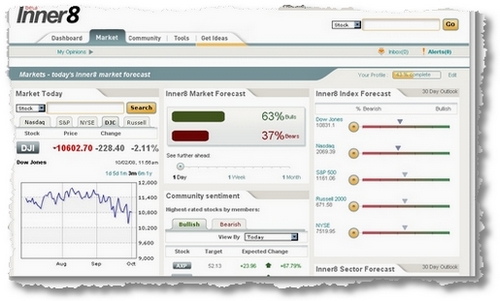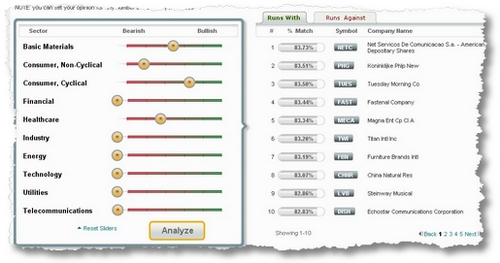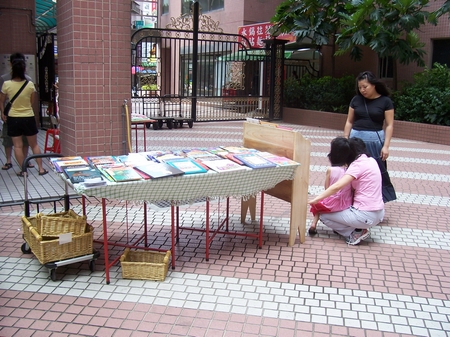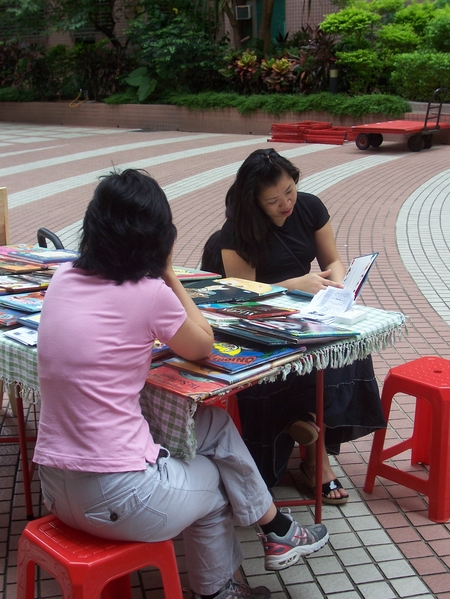Yesterday was a beautiful October day in Taiwan. Christine and I had been talking about one of the steps I outlined earlier in A Man and a Plan: renting out property. I finally was able to analyze the figures and make some modest suggestions on how to capitalize on our return by renting out our home, and living elsewhere.
- 1. We would secure a line of income, currently we’d be able to earn nearly $1078 per year gross. Of course, we’d have to pay a renter’s tax at a gross 10%.
- 2. We would be able to start saving for a new house, so we could expand our portfolio to two or even more houses.
- 3. We’d get experience of different property markets as we could live in different areas throughout the metropolitan area.
- 4. If we made additional mortgage payments, we’d be able to secure an additional 8.78% return because our mortgage payment would decrease by a proportionate amount.
- 5. Each renter would have to pay a two month deposit, so we’d be able to invest that nearly US$1,100 as well. Obviously, it would have to be paid back at some point. But we could earn the interest on that amount in the meantime.
Naturally, we’d be willing property agents, and happy landlords… I am beginning to think it’s a step we would like to take. So yesterday, we went off to look at some alternative places to live. We went up into the mountain areas behind our home near XiaouPingDing area in Tamsui County. It’s right next to the city boundaries. We came across a beautiful property called in West in Hilla. This is a prestigious development begun in the late 90’s and restarted with the recent boom in property prices.

Its unique draw is the location: it has an absolutely uninterrupted view across the Tamsui Bay area from Sanchih on the right to the new port on the left. It was a bright breezy day on the mountains, and we thought we were in heaven. Clearly this is the impression the developer had intended… And it is unparalleled in all the years we’ve been looking at apartments, to get an apartment or house with such a view over the surrounding area. It left me speechless, the photographs on the website just do not do justice to this at all.
The PreSell: Dreams, Apartments, and Cold REALty
Because the pre-sell was all intended to build on that dream: a clubhouse, a hotel, reception center, shopping, etc. all supposedly top quality and ‘being built’. The community itself was composed of two types of accommodation: villas and apartments, with villas selling in the NT$20 million range, and apartments selling from approx. NT$4 million upwards. According to the sales lady, most villas and larger apartments were already gone, and there were none at our requested size. So she took us to see a modest apartment and a much larger (twice our current size). Both apartments were reasonably fitted out, refurbished, and spacious.
Let’s party like it’s 1999!
Slowly, though, we managed to piece together the story: the apartments phase I were originally built and sold at the end of the 90’s (no word on what pricing was used), but when the major earthquake hit us in 1999, all mountain side development stopped on government orders. Much of the central county of Nantou was in mountainous areas, and this area experienced great shaking, landslides, collapses, and a geographical upheaval on that fateful day.
Of course, this also coincided with a weakening of the property market island-wide; and the original developer collapsed, unable to complete development on some of the villas. This also happened at a similar time in many places island-wide. Only recently, did the government give the go-ahead to such communities whose projects had been suspended.
The DEAL: Wow!
These were, of course, snapped up on the cheap. I was told at about 1/3 of the current retail price. This was probably a firesale by the owning bank, as much property was sold by banks from the repossessions at the beginning of the 2000’s. The new developer then jumped into the fray, put up a lot of seed money, refurbished the units that were unsold, and relaunched the project in 2006-7 with a large marketing program. I’m pretty sure that the unfolding property boom also helped to shift product. Certainly the website is very nicely done, with lots of details and touches.
As the result of visiting this property, I was able to further some of my own thinking on property markets and figure out what kind of property this was. This is my statement on my theories…
The A,B,Cs of evaluating property
These three kinds of property are only clearly differentiated by price in a price recession, though in a property boom it may be difficult at times to differentiate clearly between the three categories, though not between A & C. So what constitutes each category?
Category A – property that is fairly valued.
This includes premium property as well as property that is always near fully valued. It’s rare to get a bargain on such property as it is usually undiscounted. Factors that identify its value: proximity to transportation centers, high desirability, stable pricing (even premium plus pricing), good area, building quality, builder reputation, etc.. In our area, we reckon there are two or three communities that rank in this category: ours, the one across the road, and perhaps one other. Ours is simply because of its proximity to the MTR and its sheer size; the one across the road because of its zoning as commercial land, it enjoys a 20% premium over ours; and perhaps another couple.
Category B -property trading at a discount to market.
property that is adjacent to Category A property or in some important respect resembles Category A property. In a property bubble, it may be difficult to identify this kind of property at all because it looks like, and smells like, Category A property. But in a property bust, this kind of property can lose value much more so than the first category. In the non-manic phases of the property cycle, this kind of property can sell at a discount to average property prices in the area. Near our community is an older community that is smaller in stature, with an older building, older design, and poorer quality construction. Its always traded at a discount to prices in our community, and its likely because few people would feel comfortable buying such a property, or living there. It’s just a poor quality building with a great location.
Category C -property that is valued otherwise.
You can usually spot this kind of property because the price being asked is enough to make you gasp in a property boom; and, in a bust, you’d guffaw. You know the type: the garage that fetches US$1.5 million in a boom can barely be sold in a bust: why? Because it’s the sign of excess when people start grossly overpaying for property that a beggar would turn their nose up at. If you guffawed or your jaw hit the floor, then it’s a Category C type property. In a boom period, it may be difficult to tell them apart.
So what is West-in-Hilla?
Well, when we went to see this mountain community, we thought initially we were looking at Category A type property – property that was otherwise premium value because of its location and environment. After we began to unravel the story, we realized it was a tale of two communities sitting cheek by jowl. The first are the town houses (luxury houses) that sit on their property and retail at good prices, most of which have been sold; and apartments (modern apartments) – which sit in smallish blocks around the community, and which enjoy fantastic views. We thought this was premium property.
But then we began to understand the background: distressed property that had been sold, polished up and resold at a huge markup to the original purchase price. We dug a little further on the net to see that property was in fact being marked down from NT$270,000 per ping to approx. NT$220,000 on first inspection. We reckoned we could get even under that rate without asking. Of course, we would drive a much harder deal… But then we came across one person who lived there who thought NT$180,000 per ping was still too expensive. So who knows what it’s really worth? It can be difficult to value such property.
That’s when we also noted that the community is built in a sensitive area (I wonder if a community like that would be approved at all today) and the woodland is ‘protected’. It’s situated on a hill-side, where much of the tree cover has been cut down, exposing it to quite heavy winds in winter, I imagine. Don’t mention a typhoon (of which we’ve had four this year already) which can bring wind speeds in excess of 100km/h. Although there isn’t any hillside directly behind it, the risk of earthquakes in mountaineous areas can cause property to be undervalued as landslides are common, roads are easily blocked (even in typhoons)… So it was quite clear that this community price (equivalent to a suburban or even select urban locations) was trading at unrealistic and unrealizable values.
Living in Environmentally Compromised Areas
In fact, we visited about six months ago several communities with a very similar mix of property on the coast, and found that prices had declined somewhat for apartments in that community since we had been there. Mostly, this was because the secondary resale market was quite tricky. Taiwanese people like to purchase property in the mountains as a retreat. Often, the realtor told us, they buy and never move in. Why? It’s likely because the wife thinks it’s just too inconvenient for life… so they sit empty. More often than not, they fall into disrepair, community payments aren’t kept up, and the community goes into early decrepitude.
Our final determination was very much: risky property dressed up as premium property for sale to suckers who couldn’t tell the difference. In other words, this is barely class B property in a boom, but in reality the investment is quite risky, and in fact the location means that the building itself has a risk profile that means perhaps even buying insurance is difficult. But the straw that broke the camels back, some online posters claimed that this developer tends not to fulfill promises. Given the size of the dreams that we were told, a certain natural skepticism in me already surfaced when I saw the plans. It’s unlikely that the developer will make good on much of his plans, simply because the profit margins may not be there. Discounts are already available on much of the property… So, he simply won’t be able to do the math, I reckon.
From the business point of view, I really can see why he did the deal. It was a win-win deal for him, his company and the current residents. He would recover his initial investment, make some money on his investments, and help finish the community that was started earlier. It had to be good for everyone.
Our own conclusion: Beautiful but Risky
We would have loved to live there. It would have made a perfect get-a-way from the city, and for people with a lot of money, purchasing a villa there wouldn’t have caused them unnecessary hardship if they couldn’t sell it particularly quickly. For us, though, we’d have been putting a considerable amount of our personal capital at stake. To purchase such an illiquid property as a mountain property can be would make no sense. It might be quite some time before we would be able to sell it, should we want to.
In general, though, the lack of fire in the local property market also means that such properties are on the outside of the hotspots in the market until late in the boom when they become the only affordable property to city dwellers. Right now, the property market is soft and prices are stagnant, partly in expectation of weakening prices and slower economic growth. In addition, in many areas, there is an abundance of available property soaking up latent demand anyway. That’s my take.
This story has been edited, amplified and beautified since publication .
Don’t forget to subscribe to the feed for this blog! Click here…






